
Discover the Majestic Annapurna Conservation Area
Explore the breathtaking beauty and rich culture of the Annapurna Conservation Area, a must-visit national park in Nepal for every adventurer's itinerary.
The Annapurna Conservation Area is a breathtaking natural wonder located in Nepal, perfect for tourists seeking adventure and stunning landscapes. This national park is renowned for its diverse ecosystems, majestic mountain ranges, and rich cultural experiences, making it an ideal destination for trekkers and nature lovers alike. Visitors can enjoy breathtaking views of the Annapurna range, vibrant local cultures, and a variety of flora and fauna, all within this UNESCO recognized area.
A brief summary to Annapurna Conservation Area
- R2C8+5MX, Jomsom, 33100, NP
- +97761-431102
- Visit website
Local tips
- Start your trek early in the morning to enjoy the pristine mountain views and avoid crowds.
- Acclimatize properly to avoid altitude sickness, especially if you plan to trek at higher elevations.
- Consider hiring a local guide to enhance your experience and support the local economy.
- Pack layers, as temperatures can vary greatly from day to night, even in warmer months.
- Respect local customs and traditions, especially when visiting villages and interacting with residents.
Getting There
-
Car
If you're traveling by car, start from Pokhara, which is about 200 km from Jomsom, the gateway to the Annapurna Conservation Area. Take the Prithvi Highway (route 3) toward Beni. After reaching Beni, follow the road to Jomsom via the Kali Gandaki Valley. The road can be rough in places, and the journey may take 8-10 hours depending on the weather and road conditions. Once you arrive in Jomsom, follow local signs to the Annapurna Conservation Area entrance, where you will need to pay an entrance fee of approximately NPR 3,000 (for foreign tourists).
-
Public Bus
For a budget-friendly option, you can take a public bus from Pokhara to Jomsom. Buses leave from the Tourist Bus Park in Pokhara and the journey takes about 10-12 hours. It's advisable to check the bus schedule a day in advance and book your tickets early. The bus fare is around NPR 1,500. Upon arrival in Jomsom, proceed to the Annapurna Conservation Area entrance to pay the entrance fee of approximately NPR 3,000.
-
Domestic Flight
For a quicker option, consider taking a domestic flight from Pokhara to Jomsom. The flight takes about 20-25 minutes, offering stunning aerial views of the Himalayas. Flights are operated by local airlines, and it's recommended to book your tickets in advance due to limited availability. The cost of a one-way ticket can range from NPR 3,500 to NPR 6,000. Once you land in Jomsom, follow signs to the Annapurna Conservation Area entrance and pay the entrance fee of approximately NPR 3,000.
Discover more about Annapurna Conservation Area
Iconic landmarks you can’t miss
Mustang Caves
16.0 km
Discover the ancient beauty of Mustang Caves, a historical treasure nestled in the stunning landscapes of Upper Mustang, Nepal.
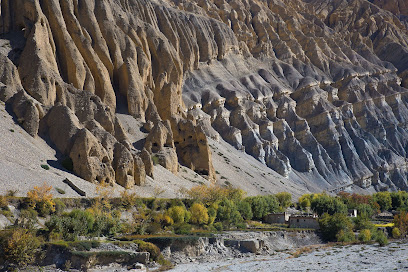
PRAKEN GOMPA
16.2 km
Experience the serenity of Praken Gompa, a stunning Buddhist temple in Tanki Manang, surrounded by breathtaking Himalayan views and cultural richness.
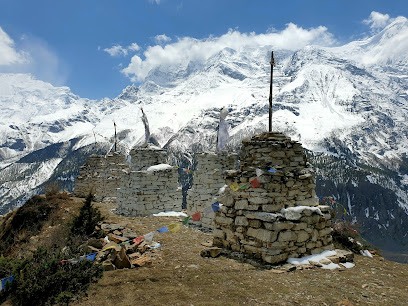
Tilicho Hotel
17.4 km
Discover tranquility and stunning mountain views at Tilicho Hotel in Tanki Manang, your ideal base for Himalayan adventures.

Hotel Yeti, Manang
17.4 km
Discover comfort and warmth at Hotel Yeti in Manang, your perfect retreat in the heart of the Himalayas, surrounded by breathtaking mountain views.

Tilicho Lake
21.8 km
Explore the breathtaking beauty of Tilicho Lake, one of the highest lakes in the world, nestled in the majestic Himalayas.

Himalayas
26.1 km
Discover the breathtaking beauty and rich culture of the Himalayas, a paradise for adventurers and nature lovers alike.
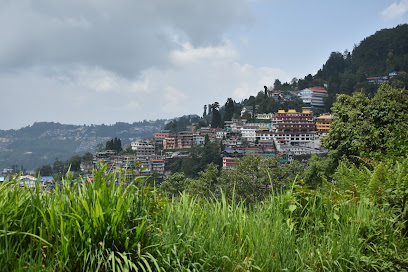
Dolpo-Sangda Trijunction
26.8 km
Explore the beauty of Dolpo-Sangda Trijunction, a picturesque confluence of trails in the heart of the Nepalese Himalayas, rich in culture and breathtaking views.

Chhairo Gompa
33.8 km
Discover the serenity of Chhairo Gompa, a beautiful Buddhist temple in Jomsom, Mustang, offering peace and stunning views in a culturally rich setting.
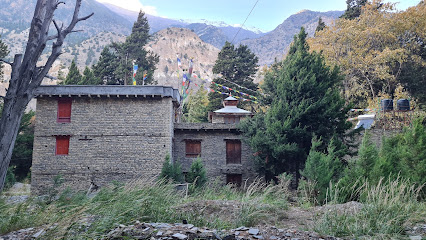
Machhapuchhare Base Camp
34.3 km
Experience the serenity and awe-inspiring views at Machhapuchhare Base Camp, a breathtaking gem in Nepal's Annapurna region.
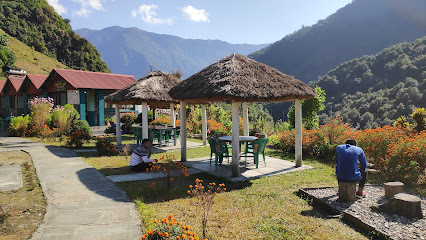
Annapurna Base Camp Trek
35.0 km
Explore the stunning Annapurna Base Camp Trek, a breathtaking adventure through the majestic Himalayas, rich culture, and unforgettable landscapes.
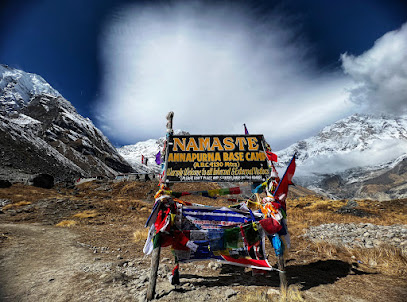
Annapurna Sanctuary
35.0 km
Explore the breathtaking Annapurna Sanctuary in Nepal, a trekking paradise surrounded by stunning peaks and rich biodiversity, perfect for adventurers and nature lovers.
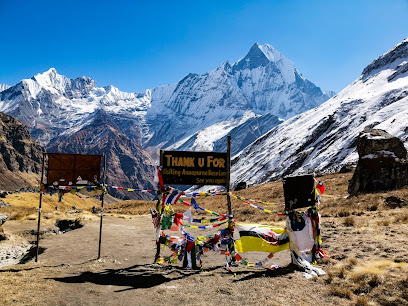
Machhapuchhare
35.8 km
Explore the breathtaking beauty of Machhapuchhre, a sacred mountain peak in the heart of the Himalayas, where adventure meets tranquility.
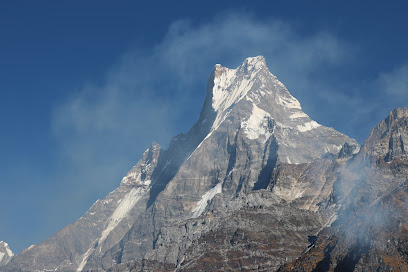
Mardi himal
38.0 km
Discover the serene beauty of Mardi Himal, a hidden gem in the Annapurna region, perfect for trekking and experiencing Nepal's majestic landscapes.
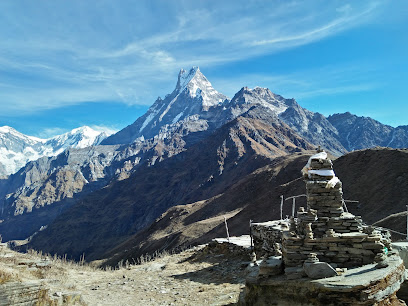
Annapurna Dakshin
39.4 km
Discover the breathtaking beauty of Annapurna Dakshin, a stunning peak offering unforgettable trekking experiences and spectacular Himalayan views.

Nemjung
40.2 km
Discover the exhilarating beauty of Nemjung, a majestic mountain peak in the heart of Nepal, perfect for adventurers and nature enthusiasts alike.

Unmissable attractions to see
Thorong High Camp View Point
6.3 km
Experience the breathtaking views and serene beauty of Thorong High Camp View Point, a hidden gem in the Annapurna region of Nepal.
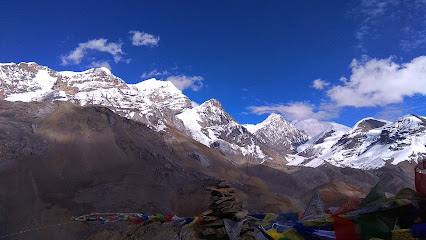
Ziv's lake
7.9 km
Explore the serene beauty and breathtaking views of Ziv's Lake in Tanki Manang, a hidden treasure of the Himalayan landscape.

Thorang La
8.2 km
Discover Thorang La, a breathtaking mountain pass in Nepal, renowned for its stunning landscapes and epic trekking routes in the Annapurna region.
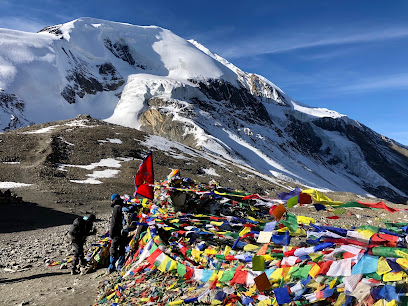
Thorong La
8.2 km
Experience the breathtaking heights of Thorong La, one of the world's highest mountain passes, and immerse yourself in the beauty of the Annapurna region.
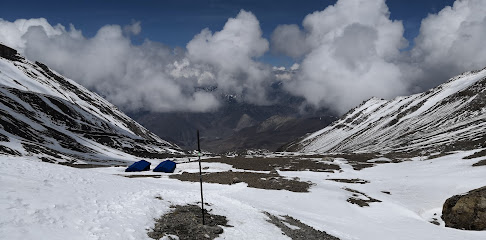
Chulu West
8.6 km
Explore Chulu West, a breathtaking peak in the Annapurna region of Nepal, offering treks filled with stunning views and rich cultural experiences.
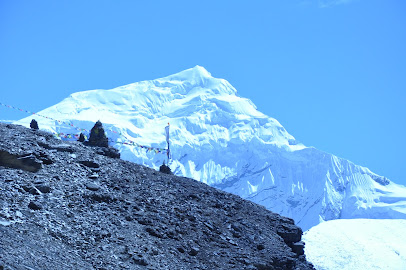
Ziv's spring
9.4 km
Discover the tranquility of Ziv's Spring in Tanki Manang, a picturesque oasis perfect for relaxation and enjoying nature's beauty.
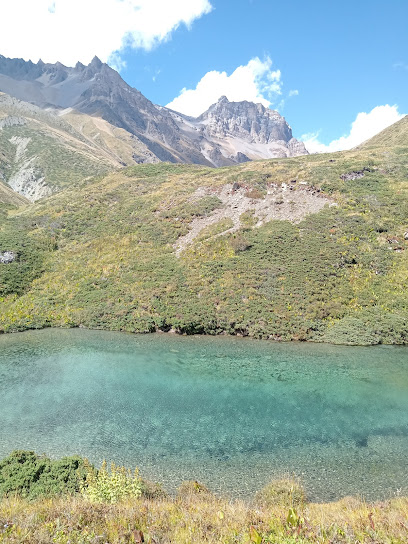
Chulu Far East
12.0 km
Explore the stunning landscapes and rich culture of Chulu Far East, a must-visit destination in the heart of Nepal's majestic Himalayas.

Dhakpochhe Tashiling View Point
13.0 km
Experience stunning panoramic views and tranquility at Dhakpochhe Tashiling View Point in Jhong, Nepal, a must-visit for nature enthusiasts.

Annapurna Circuit Trek
13.9 km
Discover the breathtaking beauty and rich culture of the Annapurna Circuit Trek in Nepal, an unforgettable adventure for all nature lovers.
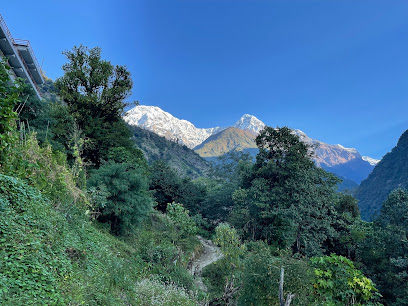
Shree Muktinath Temple
14.1 km
Discover the spiritual essence of Shree Muktinath Temple, a sacred site in Nepal combining breathtaking landscapes with rich cultural heritage.
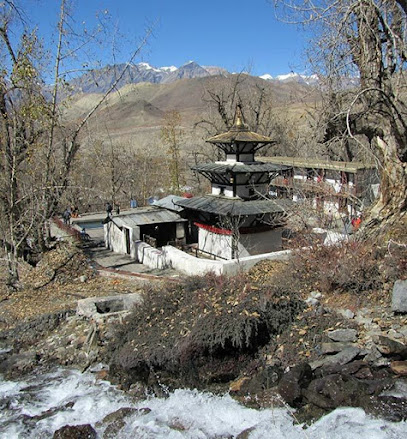
Muktinath Trips Pvt. Ltd. (Muktinath Temple, Nepal)
14.2 km
Discover the spiritual haven of Muktinath Temple in Nepal, where sacred traditions meet breathtaking landscapes in the heart of the Himalayas.
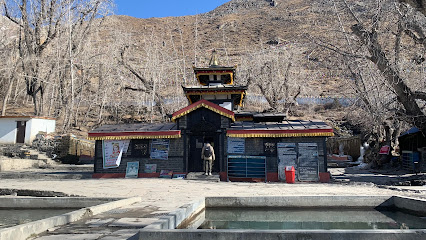
Muktinath Jagyashala ,Hawan Kunda
14.2 km
Discover the sacred Muktinath Jagyashala, a revered Hindu temple in Nepal, renowned for its spiritual beauty and breathtaking mountain views.
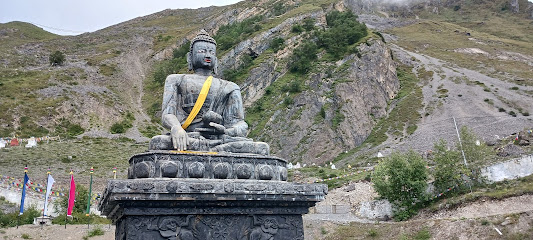
Гора Ляо Кочо Ся
14.4 km
Explore the breathtaking beauty of Mount Lya Kocho Sya in Nepal, a majestic tourist attraction offering adventure and serene vistas in the heart of the Himalayas.

Muktinath lower Mustang Nepal
14.4 km
Discover the spiritual oasis of Muktinath, a sacred Hindu temple in Nepal, surrounded by breathtaking landscapes and rich cultural heritage.
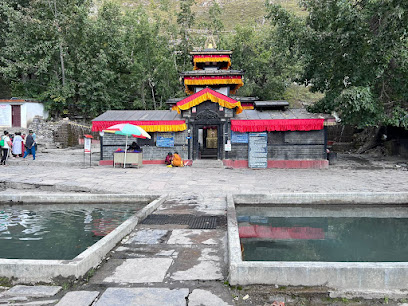
Muktinath Temple Gate
14.6 km
Discover the spiritual haven of Muktinath Temple, a sacred site in the breathtaking Himalayas, offering peace, culture, and stunning landscapes.
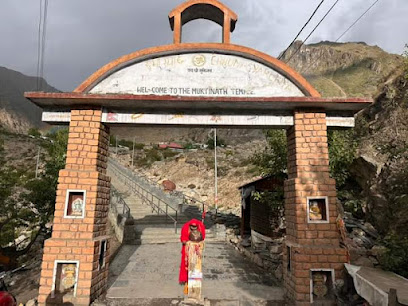
Essential places to dine
Phedi Restaurant
12.0 km
Experience the best of Nepali cuisine amidst stunning mountain views at Phedi Restaurant in Muktinath.
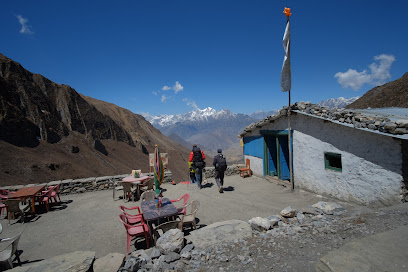
RAJU RESTAURANT
12.5 km
Experience authentic Nepalese cuisine at Raju Restaurant in Tanki Manang – where every dish tells a story.
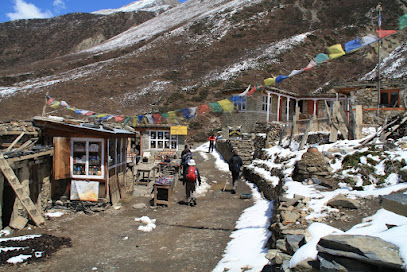
Nirvana Hotel and Restaurant
14.5 km
Discover the flavors of Nepal at Nirvana Hotel and Restaurant in Tanki Manang—where comfort meets exquisite local cuisine.
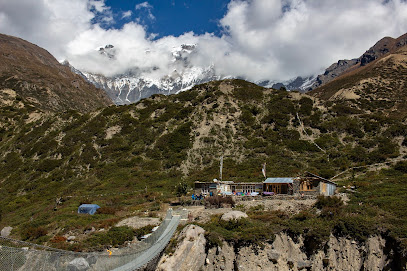
Tibetan kitchen Manang
17.1 km
Discover authentic Tibetan cuisine at Tibetan Kitchen Manang in Tanki Manang – where every dish tells a story.

Dal Bhat Restaurant & Shop
17.2 km
Discover authentic Nepali flavors at Dal Bhat Restaurant & Shop in Tanki Manang—where every meal tells a story.
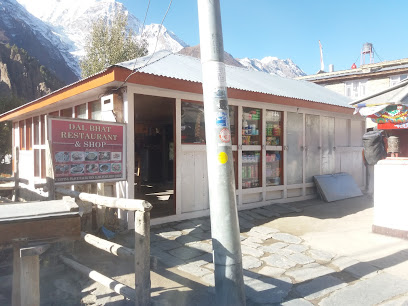
Gyalzen Lodge & Restaurant
17.2 km
Discover authentic Nepali flavors at Gyalzen Lodge & Restaurant in Tanki Manang—where every meal is a journey through Himalayan cuisine.
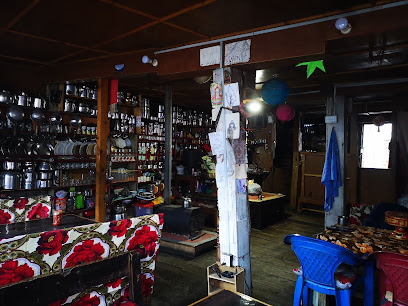
Tsering Restaurant & Bar
17.3 km
Discover the flavors of Nepal at Tsering Restaurant & Bar in Bhraka – where every dish tells a story against the backdrop of stunning Himalayan views.
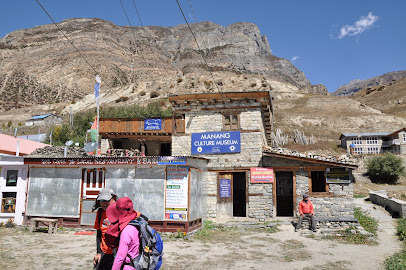
Dukki Restaurant & Cottage
17.3 km
Discover authentic Nepali flavors at Dukki Restaurant & Cottage in Tanki Manang – where every meal tells a story.

Annapurna Restaurant Cafe & Bar
17.3 km
Experience authentic flavors at Annapurna Restaurant Cafe & Bar amidst breathtaking mountain views on your adventure through Nepal.
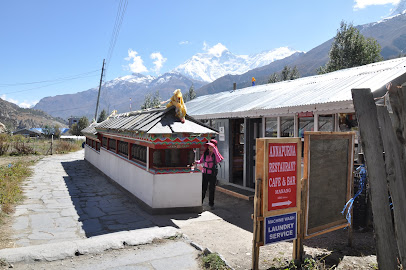
Hiimalayan Restaurant
18.9 km
Experience authentic Himalayan cuisine in Khangsar with stunning views and warm hospitality at Himalayan Restaurant.
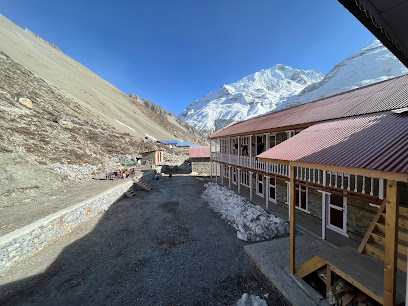
Manang , Braka
19.4 km
Discover the authentic taste of Nepal at this charming restaurant in Braka, nestled in the breathtaking landscapes of Manang.
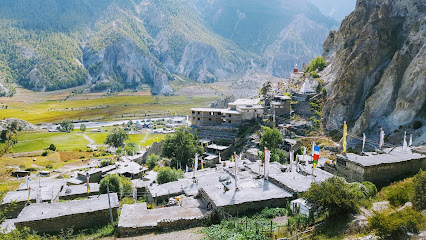
Manang
19.6 km
Experience authentic Nepali cuisine amidst breathtaking Himalayan landscapes in charming Manang.
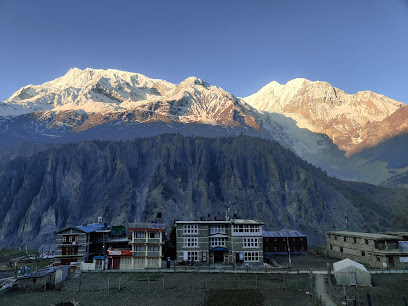
Peaceful Hotel
20.9 km
Experience unparalleled tranquility and stunning mountain views at Peaceful Hotel in Ngawal - your ideal retreat in Nepal's Annapurna region.
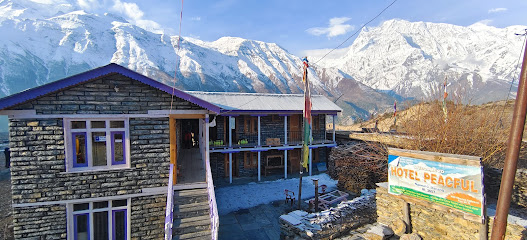
Chusang
21.8 km
Experience authentic Nepali cuisine in Chusang's charming restaurant, where every dish tells a story amidst breathtaking Himalayan scenery.
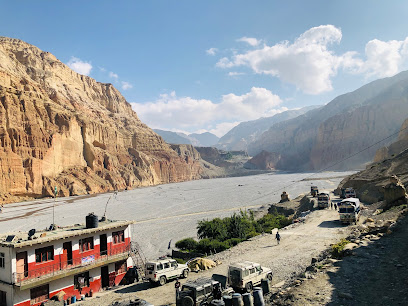
Tilicho Tea House
22.2 km
Discover authentic Himalayan flavors at Tilicho Tea House in Khangsar – where every meal is a journey through tradition.
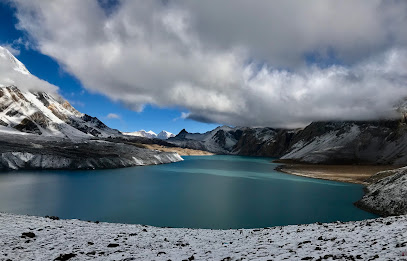
Markets, malls and hidden boutiques
Panorama Inn Mustang Nepal
14.1 km
Experience the enchanting beauty of Mustang at Panorama Inn, where adventure meets tranquility in a serene resort setting.
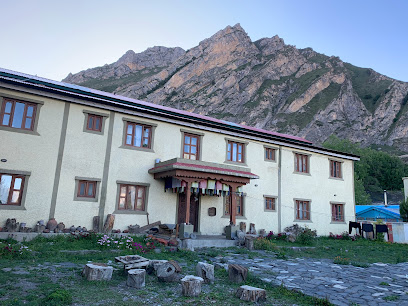
Khangsar Store
17.3 km
Explore the vibrant Khangsar Store, an outlet mall in Nepal offering unique shopping experiences and a taste of local culture amidst stunning landscapes.
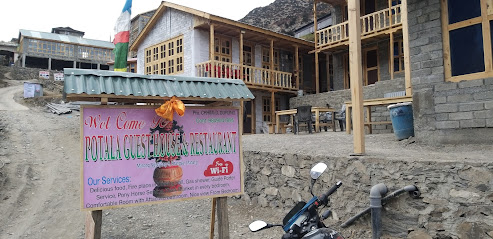
Annapurna trekking shop
17.3 km
Explore the Annapurna region with confidence - gear up at the Annapurna Trekking Shop in Manang, your adventure starts here!
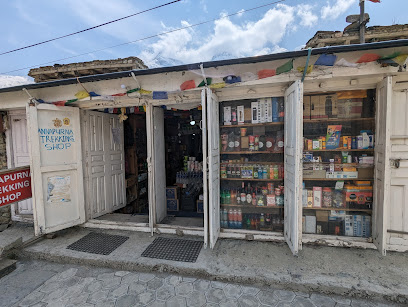
Karma shop
18.3 km
Experience the local charm and unique offerings at Karma Shop in Bhraka, a must-visit destination for tourists exploring Nepal's stunning landscapes.

Royal
20.7 km
Explore local crafts and flavors at Royal Store in Ngawal, a charming destination that showcases the vibrant culture of Nepal.

Pema Wangyal Shop
22.3 km
Explore the vibrant Pema Wangyal Shop in Surkhang for authentic local goods and a true taste of Nepalese culture.

Kagbeni mustang
22.8 km
Explore Kagbeni, a hidden gem in the Mustang region, where ancient culture meets breathtaking Himalayan landscapes.
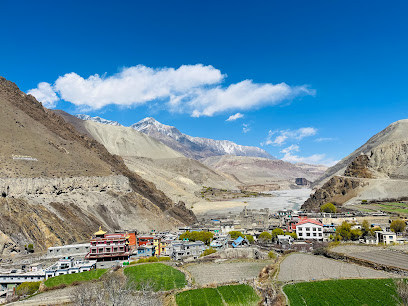
New Bishal Trader's
22.8 km
Explore the vibrant local culture at New Bishal Trader's, your go-to general store in Kagbeni for authentic souvenirs and essential travel supplies.
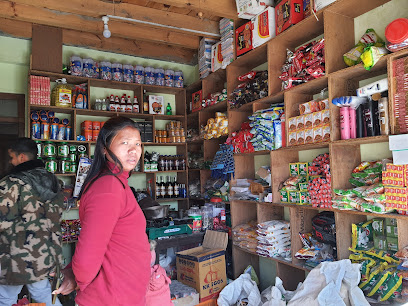
Jogidha
24.6 km
Explore the vibrant store of Jogidha in Nepal, a treasure trove of local crafts and unique souvenirs that reflect the rich culture.
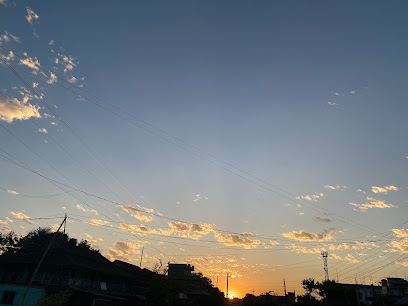
AA sports
27.6 km
AA Sports in Jomsom: Your adventure begins with the best sporting goods and expert advice in the heart of the Himalayas.
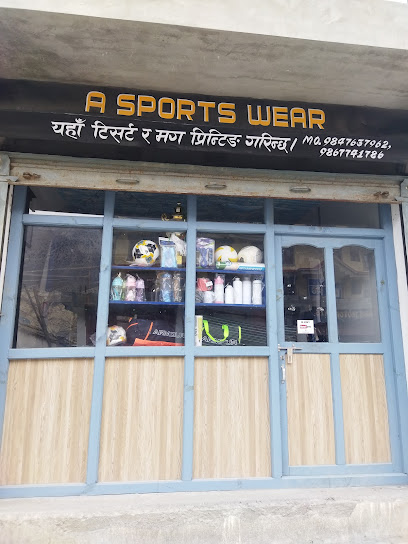
Shreeraaj handmade shop
27.9 km
Discover unique, handcrafted fashion accessories at Shreeraaj Handmade Shop in Jomsom, blending tradition with contemporary elegance.

People’s plaza
27.9 km
Experience the heart of Jomsom at People's Plaza, a vibrant shopping destination offering local crafts, delicious cuisine, and a taste of Nepalese culture.

Our mustang fancy jomsom
28.1 km
Discover the vibrant blend of traditional and modern women's fashion at Our Mustang Fancy Jomsom in the heart of Nepal.
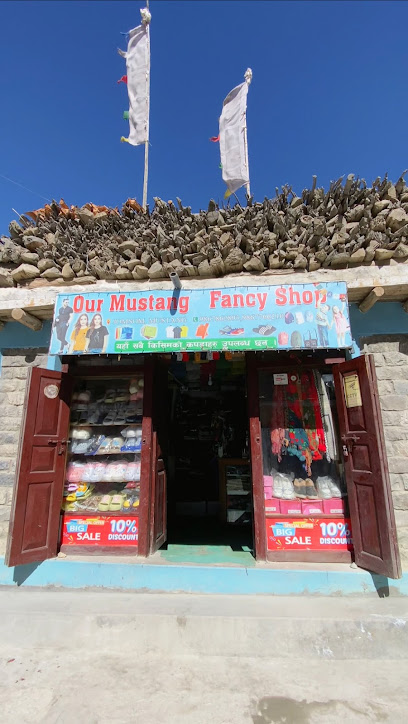
Jhakash
28.2 km
Explore the charm of Jhakash in Jomsom, where unique local crafts meet authentic Nepali culture for an unforgettable shopping experience.

Himalayan Java Gallery Cafe
28.7 km
Experience the perfect blend of coffee, art, and live music at Himalayan Java Gallery Cafe in Jomsom, Mustang.
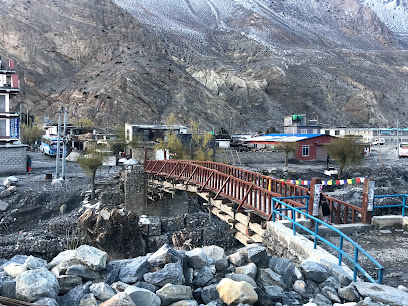
Essential bars & hidden hideouts
धुम्बा ताल जोमसोम
24.3 km
Explore the tranquility of धुम्बा ताल in Jomsom, a serene lake surrounded by majestic mountains and rich local culture.

Cravend Restro and Bar
28.9 km
Experience the flavors of Nepal at Cravend Restro and Bar, where delicious food, refreshing drinks, and stunning mountain views await you.

KINGDOM RESTRO BAR & LIVE MUSIC (THAKALI BHANCHA GHAR)
29.1 km
Discover the essence of Jomsom at Kingdom Restro Bar & Live Music, where authentic Nepalese cuisine meets vibrant nightlife and live entertainment.
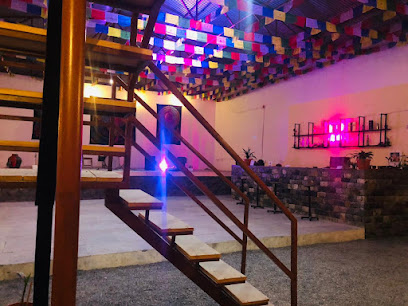
Rooftop guesthouse and restaurant
30.6 km
Discover breathtaking views and authentic flavors at the Rooftop Guesthouse and Restaurant in Surkhang, a unique blend of comfort and culture.
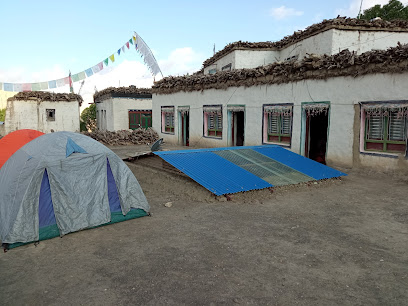
Sunrise restaurant & BAR
40.9 km
Discover the vibrant flavors of Lo Manthang at Sunrise Restaurant & Bar, where local cuisine meets breathtaking views in a charming atmosphere.

Black and white bar and music venue
46.9 km
Discover the lively Black and White Bar in Machhapuchchhre, where vibrant music and local flavors create an unforgettable nightlife experience.

Man maiju chok
48.1 km
Discover the vibrant nightlife of Kathmandu at Man Maiju Chok, a lively bar offering local drinks and a friendly atmosphere.

sss Trade suppliers
48.4 km
Discover Namarjung's vibrant bar scene at SSS Trade Suppliers, where friendly atmosphere and delightful drinks await every visitor.

Mamta
48.5 km
Experience the vibrant nightlife at Mamta, a cozy bar in Namarjung offering a delightful selection of beverages in a welcoming atmosphere.

Rabin bhujel
48.5 km
Discover the charm of Rabin Bhujel, a cozy bar in Namarjung, offering a perfect blend of local drinks and warm hospitality for every traveler.

Lamahi Dang
48.5 km
Experience the lively atmosphere of Lamahi Dang, a vibrant bar in Namarjung where locals and tourists come together to unwind and socialize.
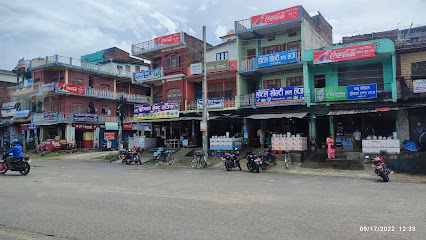
Koshi
48.5 km
Experience the vibrant nightlife at Koshi, a bar in Namarjung offering delightful drinks and a cozy atmosphere for every traveler.

Sumit giri
48.5 km
Discover the vibrant spirit of Namarjung at Sumit Giri, where delightful drinks and local culture blend seamlessly.

Kathmandu balaju
48.5 km
Experience the vibrant nightlife at Kathmandu Balaju, a lively bar in Namarjung offering a diverse drink selection and a welcoming atmosphere.

Vasandhara choki
48.5 km
Experience the vibrant nightlife and local culture at Vasandhara Choki, a premier bar in Namarjung, Nepal, perfect for unwinding and socializing.




